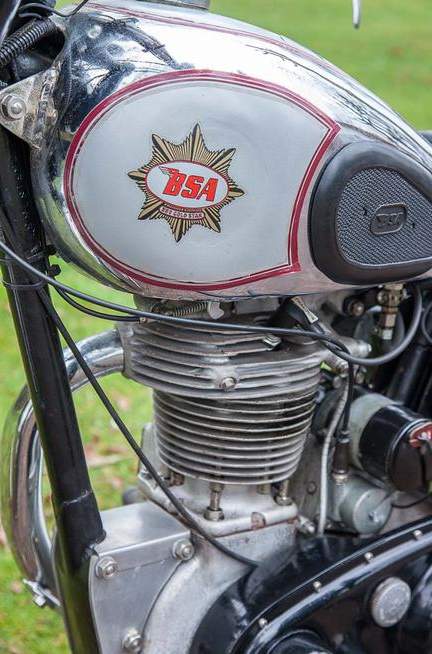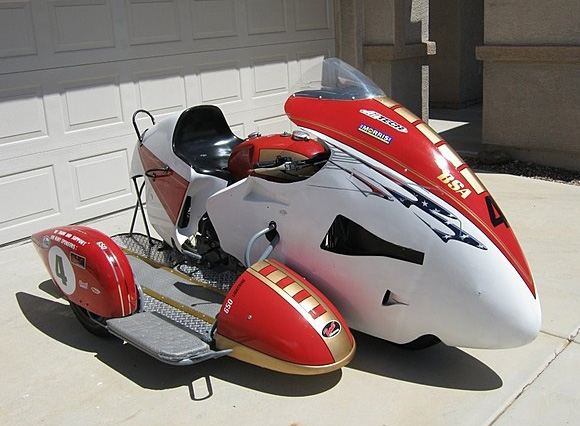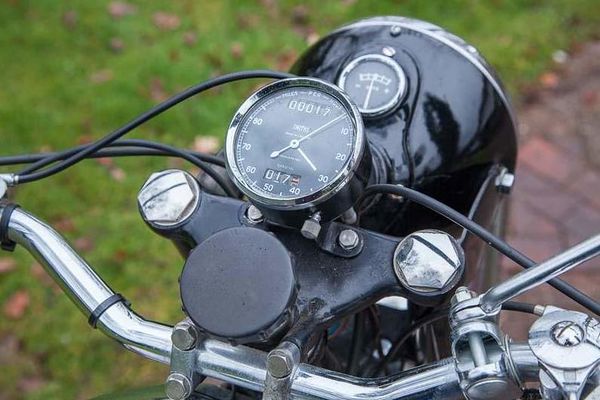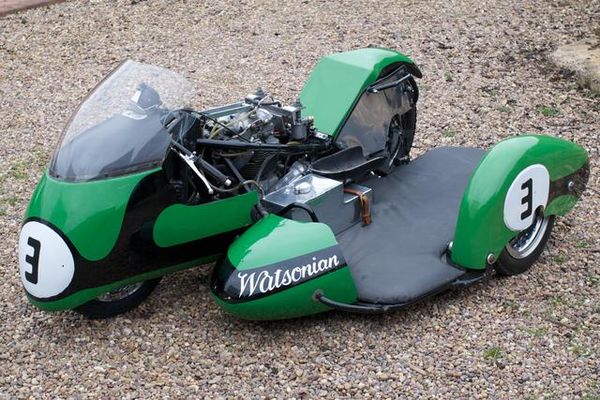BSA A65 Racing 650 Sidecar
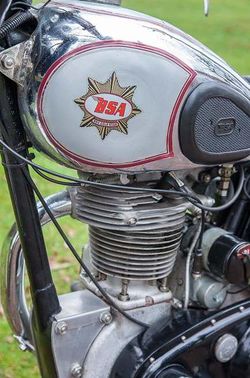 |
|
| BSA A65 Racing 650 Sidecar | |
| Manufacturer | |
|---|---|
| Production | 1965 - 66 |
| Engine | Four stroke, parallel twin cylinder, OHV |
| Compression ratio | 9.0:1 |
| Ignition | Twin coil |
| Spark Plug | Champion N4 |
| Battery | 2 x 12V, 10 a.h., Lucas RM19 |
| Transmission | 4 Speed |
| Frame | Steel tubing, cradle, adjusted to accommodate sidecar |
| Suspension | Front: Telescopic forks with coil spring - hydraulically damped Rear: Coil spring/hydraulically damped |
| Weight | |
| Manuals | Service Manual |
Engine[edit | edit source]
The engine was a Air cooled cooled Four stroke, parallel twin cylinder, OHV. The engine featured a 9.0:1 compression ratio.
Drive[edit | edit source]
Power was moderated via the Multi-plate with bult-in cush drive.
Chassis[edit | edit source]
The front suspension was a Telescopic forks with coil spring - hydraulically damped while the rear was equipped with a Coil spring/hydraulically damped.
Photos[edit | edit source]
Overview[edit | edit source]
BSA A65 Sidecar Racing
After racing on grass-tracks and speedway, he graduated to tarmac courses in 1959 on a BSA. He raced a solo BSA Road Rocket in the Thruxton 500 mile endurance race partnered by Norman Storer finishing seventh, and again a BSA C15 in the 1961 Silverstone 1000 endurance event, partnered by Bert Morris, finishing with speedway and selling his outfit in 1961.
He first entered the Isle of Man Sidecar TT race in 1960 followed by 1961, with DNFs in both events. He then won in 1962 with passenger Eric Bliss whom he first raced with for part of the 1961 season, establishing the first all-British Sidecar TT win since 1954, the first mountain circuit win by a British machine since 1925, and the first-ever international TT victory by a BSA.
Vincent campaigned the early BSA A7 500cc pre-unit construction engined sidecar outfits and then later the unit-construction A50 engines when these became available after 1962. During the 1960s some sidecar races particularly those carrying World Championship status including the TT were restricted to 500 cc, whereas the UK national series races had classes where 650 cc (BSA A65 in Chris' case) and larger engines were used.
He is associated with popularising the true 'kneeler' concept, and although this was earlier attributed to Eric Oliver who used a semi-kneeler in the 1950s, Chris' own frame designs enabled a sidecar outfit with a much lower frontal area and smaller proportions hence better streamlining and lower centre of gravity which is fundamental for high-speed cornering. Vincent believed his road-racing success was in part due to his experiences on grass giving him an advantage over many of his rivals, stating "Where I have an advantage over many of my rivals is on corners. The power comes in much sooner and my grass track experience has taught me how to avoid and get out of trouble".
Chris later used the only reliable, competitive engine for Grand Prix and UK 500cc events, the flat-twin BMW RS54 Rennsport.
During the middle 1960s, sidecar riders sought to achieve greater engine capacities and basic raw power. This included use of car engines and three-wheeled, car-type layouts driving a pair of front wheels.
He started to develop a new concept with a repositioned Rennsport BMW engine. Instead of a shaft driving the rear wheel, it would drive the front and sidecar wheels. The outfit was soon 'outlawed' by the FIM, the European road-race regulatory body, as the front and rear wheels (non-sidecar) were designed to be out-of-line, hence deemed to be a three-wheeler (or cyclecar), causing Vincent to revert to his 'old', conventional outfit.
For the 1972 season Vincent used a Munch-URS engine based on a Helmut Fath design. He finished fourth in the Championship with a win at the Finnish Grand Prix held at Imatra.
Before the start of the 1973 season, Munch backer American George Bell pulled the finance from the race team, putting the project up for sale, leaving Vincent without machinery. Vincent retired from competition in 1974 after campaigning a Yamaha-engined outfit, although he continues to ride in demonstration events.
| Make Model | BSA A65 Sidecar Racing |
|---|---|
| Year | 1965 - 66 |
| Engine Type | Four stroke, parallel twin cylinder, OHV |
| Displacement | 654 cc / 39.9 cub in. |
| Bore X Stroke | 75 x 74 mm |
| Carburetors | Amal monobloc 389/67 |
| Cooling System | Air cooled |
| Compression | 9.0:1 |
| Lubrication | Dry sump |
| Engine Oil | SAE 20W/50 |
| Exhaust | 2-into-1 |
| Ignition | Twin coil |
| Spark Plug | Champion N4 |
| Battery | 2 x 12V, 10 a.h., Lucas RM19 |
| Starting | Running start |
| Clutch | Multi-plate with bult-in cush drive |
| Transmission | 4 Speed |
| Final Drive | Chain |
| Frame | Steel tubing, cradle, adjusted to accommodate sidecar |
| Front Suspension | Telescopic forks with coil spring - hydraulically damped |
| Rear Suspension | Coil spring/hydraulically damped |
| Wheels | Steel, wire spokes |
| Note | Specifications generally similar to the A65 R and T/R |
